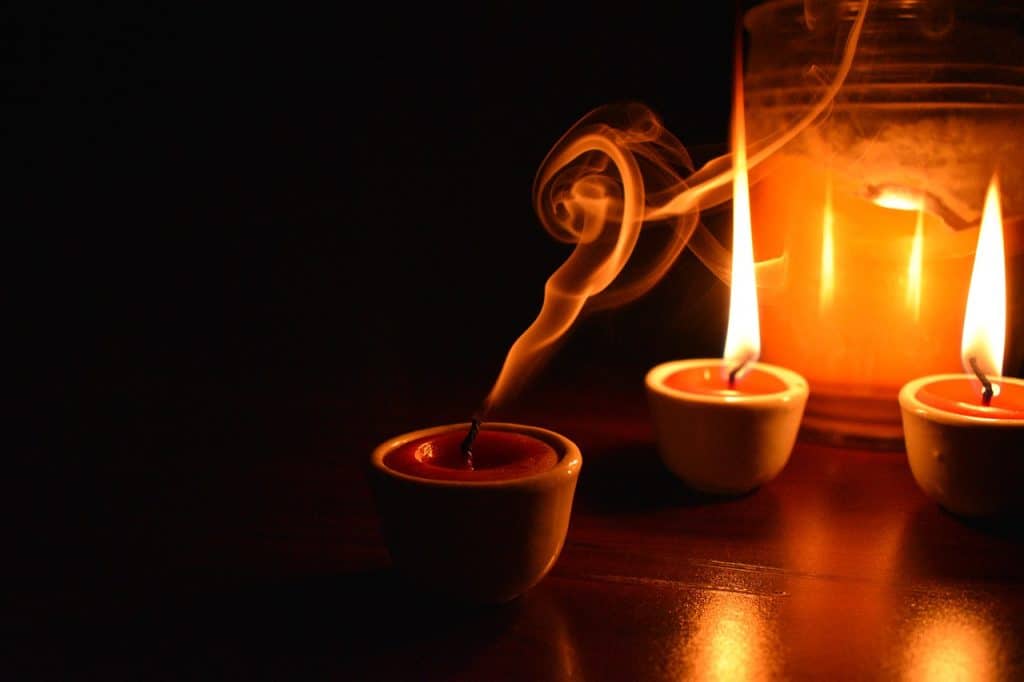Candles have been used since the golden ages for illumination. The history traces back to as far as 3,000 B.C. The Egyptians made the first candle using beeswax, and the first candleholder was made from clay. Gone are the days when candles were used primarily as a light source. These days, candles have become a luxuriant decorative piece. They are used on blissful occasions, candlelight dinners, for celebrations, and some are tailor-made for birthdays as well. Thus, there are as many candles as many needs.
Photo by Antonín Daněk on Unsplash
All the candles have a few things in common. They are all made of Wax, contain a Wick, and when the wax burns it melts. It gets smaller and smaller, eventually, the wick falls and the candle goes out. Nonetheless, most people consider wax as just… wax. They don’t give it a deep thought. But, to know where the wax goes, you need to understand the chemistry of Wax and Candle Burning.
Understanding Chemistry of Candle Wax
The wax is usually made from petroleum (hydrocarbon) products Paraffin. It means the carbon (C) and hydrogen (H) are the fundamental components of any wax. Candle wax is formulated with chains of carbon atoms and adjacent hydrogen atoms (Hydrocarbons).
Photo by Jaclyn Moy on Unsplash
Nowadays, candles can be made from any organic substance. These include beeswax, soy wax, and coconut wax, and even animal fats. Essential oils and fragrances are also added to the wax. The wax made from these candles not only burns cleaner than paraffin wax that is derived from fossil fuels but also gives off a mild aroma.
It is significant to understand that these waxes are much efficient than what was consumed in the past. Presently, you can easily find candles that can burn for a long time without melting into soot and having the least emissions of polluting molecule of carbon.
Chemistry of Candle Burning
The answer for where the wax goes when the candle burns are in the “combustion” process. Candles produce light by generating heat from combustion. The solid wax melts into liquid paraffin near the wick of the candle. And this melted wax acts as fuel for burning candles. It is drawn up by capillary reaction along with the wick. The more the candle burns, the more liquid wax is drawn up till there is nothing left.
The heat breaks down the hydrocarbon content of the liquid wax into Hydrogen and Carbon atoms. The resultant molecules are drawn towards the flame and oxidized in the combustion reaction. Carbon is first oxidized to carbon monoxide that is further oxidized to carbon dioxide at the bottom of the flame (blue region). The end by-products are carbon dioxide and water vapors. It produces heat and light, both are emitted in all directions of flame.
The simplest equation for wax combustion reaction is
CnHn + nO2 = nCO2 + nH2O
The reaction usually depends on the type of wax that is used for candle making. The heat initiates the oxidation of hydrocarbons and produces carbon dioxide and water vapors.
Approximately one-quarter of the energy from combustion is emitted as heat. The heat regulates the process. It evaporates the melted wax to burn and melts the solid wax to maintain the supply of fuel. The reaction continues till there is no more fuel (wax) or there isn’t sufficient heat to melt the wax.
Photo by Carolyn V on Unsplash
The initiation and stabilization of the process take time as indicated by the flickering flame. Eventually, the candle burns steadily. This process ends up in a mixture of vapors and gases in the air. It also produces particulate matter, when candles are burned in large quantities, which results in coating walls and ceilings.
Candle Combustion and Zones of a Candle Flame
The flame can be categorized based on the color and temperature into different zones. The base of the flame is blue, the zone above is dark orange-brown, and the topmost is a bright yellow that dominates the flame.
The base is the oxygen-rich blue zone. This is where the hydrocarbon molecules vaporize and split into hydrogen and carbon atoms. Hydrogen is oxidized promptly into water vapors and few carbon molecules into carbon dioxide.
The mid-zone is slightly oxygen-deplete. This zone characterizes the breakdown of carbon molecules into solid particles. These particles, along with carbon dioxide and water vapors from the base zone, rise along with the wick and are heated up to 1000 degrees Celsius.
At the underside of the yellow zone, soot production increases. They continue to rise and heat until they ignite a visible spectrum of light. This part of the flame is the dominant one that gives the flame its strongest yellowish hue. The temperature of this region is 1200 degrees Celsius.
The fourth zone of the candle is the pale one, the outside blue boundary that is the extension of the bottom blue zone. This is where the wax directly comes in contact with the oxygen of the air. With 1400 degree Celsius temperature, this is the hottest part and gives off a blue color. It is the hottest portion of the flame, almost 1400 degrees Celsius.
The heat of the flame vaporizes the molecules where they react with oxygen from the air to generate heat, light, water vapor, and carbon dioxide.
Steady fuel supply is critical for the combustion of the candle. Candle begins to flicker if the fuel content is too low, or may flash up if it is too high resulting in incomplete combustion and soot formation.
Frequently Asked Questions
Where does the candle wax go if the melted candle solidifies again?
The burning of a candle is based on the burning of the evaporated liquid wax. The liquid wax is pulled upward by the capillary action of the wick. The liquid wax that solidifies around the candle was simply not heated enough to be vaporized.
If the fuel for burning a candle is wax, why doesn’t it burn up all at once?
The fuel for the burning of a candle is a liquid wax. The candle is solid at room temperature and it requires a certain temperature, around 200 degrees Celsius to melt. The melted wax is drawn upward by the wick. Increased temperature/heat from combustion evaporates the melted wax that is burned and combusted into carbon dioxide and water vapors. That is why it does not burn up all at once.
Does candle combustion pollute the environment?
You might be thinking of the environmental pollution from the combustion of the candles. The good news is that you can enjoy the ambient atmosphere with candles and still have a minimal environmental impact, as long as you choose the right ones.
Even environment-friendly candles are available in the market. The candles made from organic substances as soy wax, beeswax, or coconut wax burn clean and efficiently. They don’t produce soot/smoke. Rather leave a pleasing scent that lightens your mood.
Is the soot from incomplete candle combustion harmful for us?
Yes, the soot produced from the incomplete combustion of the candle is harmful for inhalation, especially for respiratory patients. The soot is of the particulate site that can be easily inhaled and reach lungs and bronchi. It is also studied to have toxic and carcinogenic substances. The carcinogenic substances include benzene and toluene.
Therefore, it is recommended to buy candles made from natural wax such as beeswax, coconut wax, and soy wax. These candles contain only a small proportion of paraffin wax. Therefore, the soot is produced in small amounts compared to traditional wax candles. Thus, they burn clean and environment-friendly.
Conclusion
To wrap it up, we can conclude that the burning of the candle is solely a combustion process. The process is efficient that burns up the candle wax completely. It can be made environment friendly by using candles made from natural animal fat or plant oil.




